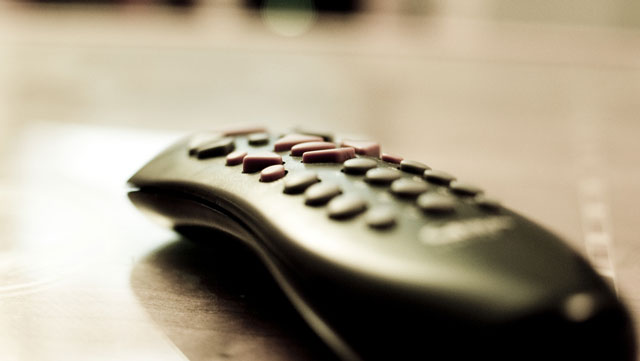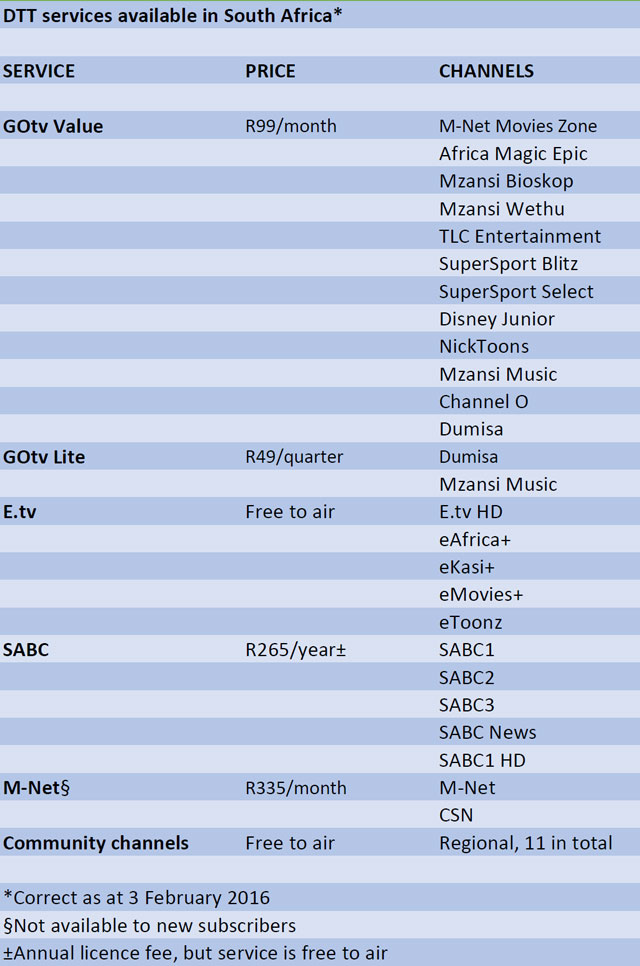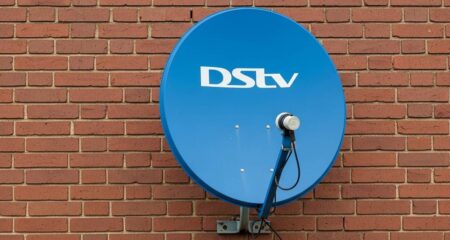
It’s finally happened. South Africa this week launched digital terrestrial television (DTT), ushering in a new chapter in the country’s broadcasting history, but one that has arrived many years later than promised.
Communications minister Faith Muthambi on Monday announced the commencement of “dual illumination”, a period where both analogue and digital signals will coexist for a period of time, finally allowing broadcasters to launch commercial services.
MultiChoice was first out of the gate, on Wednesday debuting the 12-channel GOtv “Value” bouquet (and a two-channel “Lite” option).
The SABC did not respond to a request for comment about its plans, while e.tv said in an e-mail that the start of dual illumination “requires that the e.tv channel is available on the DTT network”, something it has done, and that more channels will follow “in due course”.
Though government has announced the start of dual illumination — a process all countries that are switching from analogue to digital must go through — it has not yet announced the all-important date when the analogue signals will be switched off.
Existing and prospective wireless broadband operators — including the big mobile network operators — are waiting on tenterhooks for that date. When analogue switch-off happens, it will free up tracts of valuable radio frequency spectrum that will be reassigned for broadband.
Telecommunications & postal services minister Siyabonga Cwele has promised to provide a policy directive by 31 March on how this “digital dividend” spectrum, and other important frequencies, will be allocated by communications regulator Icasa.
Telecoms operators have grown increasingly impatient at the years-long delays in South Africa’s digital migration project, which have occurred as a result of, among other things, a high turnover of government ministers, legal wrangling over encryption between commercial broadcasters (with e.tv is still pursuing a case against Muthambi at the supreme court of appeal), fights between black-owned set-top box manufacturers and a protracted dispute over which broadcasting standard the country should adopt.

However, significant progress has been made in the past year, in spite of vehement objections from e.tv and other parties to Muthambi’s decision to drop encryption in government-subsidised set-top boxes. The first boxes have started rolling off local manufacturers’ production lines as part of the not uncontroversial plan to provide free boxes to 5m indigent households at a cost of billions of rand. How long dual illumination will last will depend on how quickly consumers take up digital services.
Dave Hagen, technical director for DTT at M-Net, estimated that there are 14m television households in South Africa. Of those, 5m will get free set-top boxes from the government. Of the remaining 9m, 5m already have access to a digital platform such as DStv or StarSat, or the free-to-air OpenView HD, leaving 4m homes, or about 28% of the total, that may need to acquire a digital set-top box through retail channels.
“That’s where the challenge comes in,” Hagen said. He said even 36 months for dual illumination would be “highly optimistic”. But that is not something the mobile operators want to hear, he added.
Another big challenge, Hagen said, is that a majority of the 5m households that qualify for a free set-top box don’t have an SABC television licence, which costs R265/year. Yet having a licence is a requirement when claiming a free box, a fact that could act as a significant brake on adoption.
- This piece was first published in the Sunday Times




